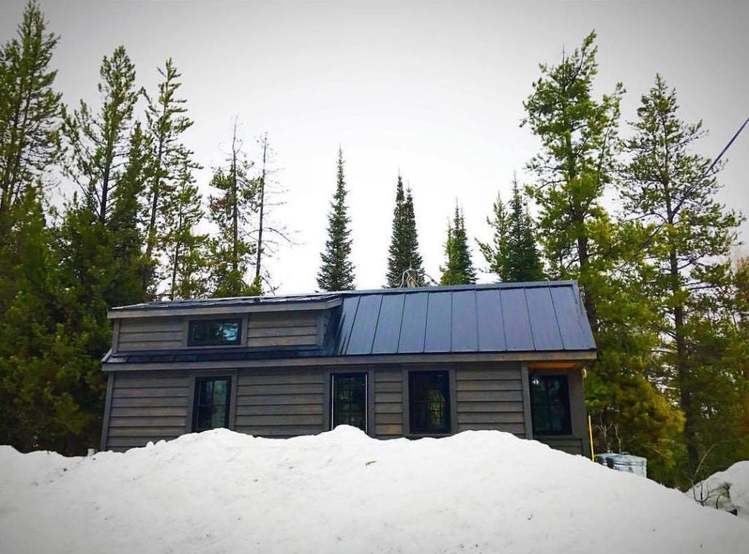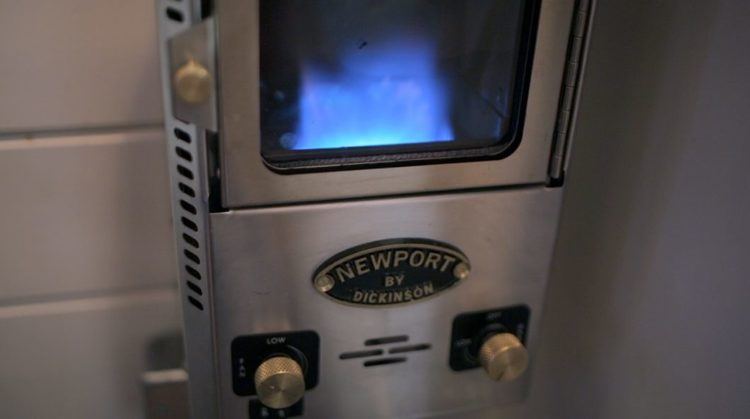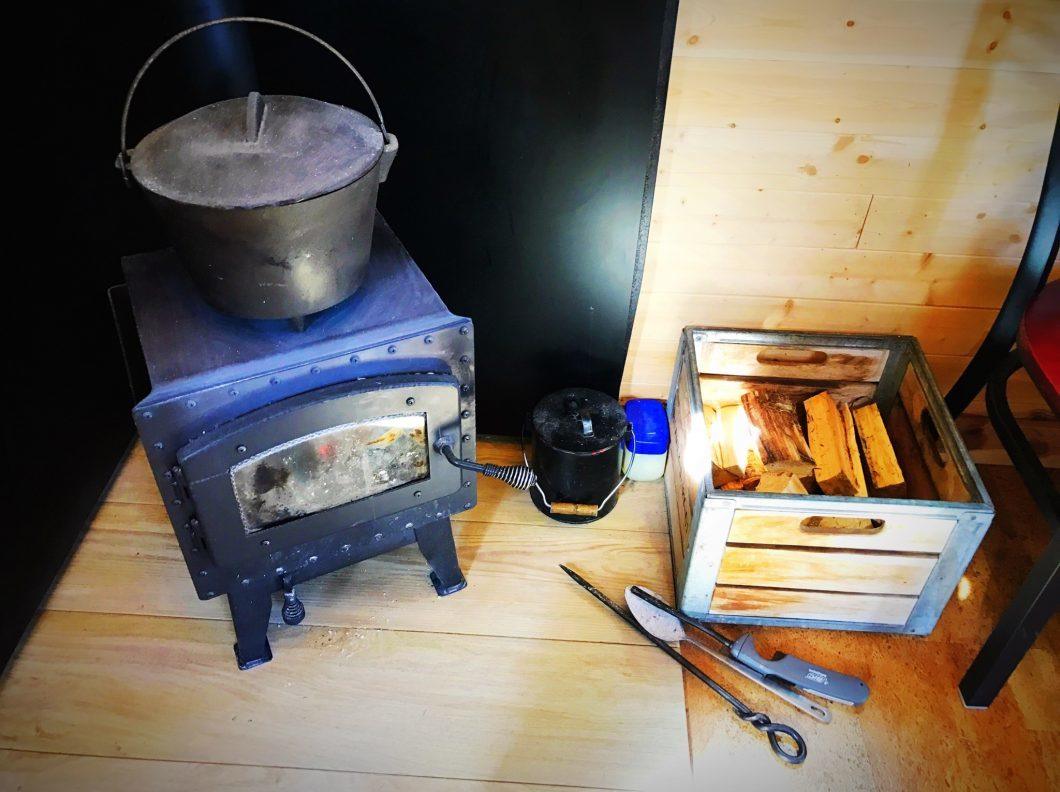Winter is coming. Now’s the time to think about tiny house winterizing and heating, so you can stay warm and cozy.
 So what are your tiny house heating options when you don’t have access to a central heating system? Before you settle on any one heating method, think about your options and your individual circumstances for the winter. Your tiny home won’t have access to standard residential heating services.
So what are your tiny house heating options when you don’t have access to a central heating system? Before you settle on any one heating method, think about your options and your individual circumstances for the winter. Your tiny home won’t have access to standard residential heating services.
If you’re planning to be on the grid come winter, your heating options will be greater.
Be realistic about your own tastes and habits as well. You may like the idea of an idyllic wood-burning stove on a frosty night, but does that interest you more than potential safety concerns?
Upfront and longterm costs of each type of heating method will vary as well. Plan ahead so that in the long run you’re not paying more than you’ve budgeted for heating.
Here are 5 of the top ways to keep your little home perfectly comfortable in any kind of cooler weather:
-
Pellet or Wood Stoves
If you’re a tiny home-owner, odds are you already consider yourself a bit of an idealist. Something about being able to live on little and pick up and leave whenever you please is thrilling. And most importantly, the feeling of self-sufficiency.
In this case, you might be most happy with a pellet or wood stove to warm your little space. They look nice, and while the upfront cost is on the pricey end, fueling them is less costly.
You’re looking at spending somewhere between $800-$3,000 for a proper wood stove installation.
Other pros of a wood or pellet stove include:
- More environmentally friendly
- Multi-functioning, they can be used to heat and cook
- Once installed, fueling them is generally cheaper than other heating methods
- They’re plain fun and charming
- Useful if you lose power or have no access to electricity
Cons:
- It’s challenging to find a wood stove small enough for a tiny home, allowing enough clearance room for safety
- Having a stove the wrong size can leave you burning up
- They’re a lot of work, finding wood, chopping it, hauling it, storing it, cleaning up after a fire, preventing ashes from getting all over
- They’re messy, be prepared to sweep up around them all the time and potentially wipe soot off the floor and wall
-
Propane Heaters
 These beauties are quite a bit less expensive at the start in comparison with a wood stove. Hitting anywhere from around $75-$1,500, you can choose one that works for your wallet.
These beauties are quite a bit less expensive at the start in comparison with a wood stove. Hitting anywhere from around $75-$1,500, you can choose one that works for your wallet.
Pros:
- Cheap
- Has a clean burn, no mess
- You can control it via a thermostat
- Refilling propane tanks is inexpensive
- Refilling tanks is easy; you can find fuel almost anywhere
Cons:
- Some models don’t give off as much heat as other heating methods
- Some models don’t come with a thermostat
- Runs on non-environmentally-friendly fossil fuels
- Depending on the model, they give off a slight propane scent
- If you’re way off the grid, finding fuel may present a challenge
-
Radiator Heaters
This is an option for those planning to stay on the grid during the fall and winter months. You’ll need a power source to run a radiator heater.
Pros:
- You can whip them out when you need them and store them away when the weather warms up
- They put off an even warmth through your entire space
- Effective at heating your entire space
- Thermostat controlled and highly energy-efficient options
- Very inexpensive to purchase
Cons:
- While you can find radiators for under $100, you’re going to have to power the thing. If one of the less efficient models, this can translate some serious electricity bills during the winter months
- If you’re off the grid, you’re out of luck
-
Electric Heaters
This is one of the most popular options for heating a tiny house for good reason.
The pros of an electric heater are many, but there are some downsides. To start, you will be thrilled with how inexpensive they can be to purchase. You’ll find options that range from $35-$150.
More Pros:
- Inexpensive to purchase
- Can be purchased almost anywhere, warehouses, department stores, large retailers, hardware stores
- BTU sizes vary so you can choose the right one for your space
- No installation required
- Thermostat controlled options
- You can select “radiant heat,” or “forced air” to warm your space
Cons:
- Can’t use them without a power source
- Unfortunately, they’re not super attractive
- They take up space inside your tiny home
- They will have a definite impact on your monthly power bills
-
Mini Split
Every tiny house dweller loves multifunctional design. That’s what makes mini-splits so handy. They’re an excellent heating and air conditioning solution for year-round weather changes.
They use a small air handling unit that is mounted on the wall or ceiling, which is connected to an exterior heat pump.
Pros:
- Energy-efficient
- Thermostat controlled
- Multifunctional: heater, A/C and dehumidifier
Cons:
- Upfront cost is on the high-end, $2,500-5,000
- Has a track record for requiring maintenance and repair costs
- Requires sizable amount of interior and exterior space
Choosing the Right Heater for You
Of course, additional tiny house heating options could be added to the list. Also, some of the best ways to ensure you stay warm include building your tiny home right from the start. Proper insulation is key to keeping heat and cold air inside.
When comes to choosing the right heating source for your home, a great way to narrow your search is to start by prioritizing these things and setting a budget. Remember, some of the most essential factors to consider include cost, safety, environmental impact, and convenience of use.

When we did our research on how to heat our home, one thing came up time and time again. The floors are cold. Especially with a THOW, the empty space under the tiny will often allow for cold winds to sweep under making it even more chilly. While you can have barriers around your tiny, that is not always practical, especially when traveling. So we have found radiant heated floors to be excellent. Nothing compares to a nice toasty floor and heat rises, so warms up the entire home nicely. Because the foot print is so small, energy consumption is not bad and it really BIS efficient.
We would also recommend have more than one source. We do have the radiant floors (three separate thermostats), a wood stove with an oven, and a mini split. Oh, and yes, we run off solar so very environmentally friendly as well
Cheers,
Robert and Julia
Cold floors are the worst, especially in the morning. So happy to hear your experience with off-grid radiant floors! I would love to do this in the future in our tiny home, or maybe in the next one. 🙂
I love the idea of a pellet stove, but all the ones I have looked at in the past also required electricity of some sort to feed the pellets. Most also had blowers, requiring electric also. Is this still the case? I’ve heard they are VERY efficient>
I bought a used tiny home with a beautiful propane stove. The first time I used it I felt weird and moved myself and my animals out and called a plumber. I had carbon monoxide 14 times what it should be. Was told the flexible gas lines weren’t to code, that I had to replace them. Guy fixed one pipe and turned it on and it drained a 75 pound propane cylinder in one night and the smell was unbearable. Plumber never showed up after that. It’s been a year without heat in there or my oven because it is also propane. I have some hanging lights that give off a little heat and I bundle up. Last 2 nights it was about 12 degrees fahrenheit and my dish soap froze. Electric heaters all drain all my solar in an hour or so.